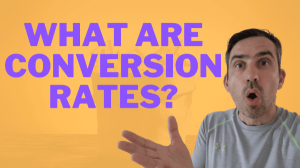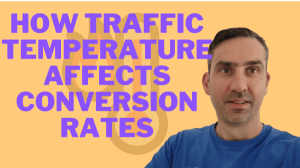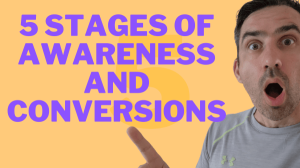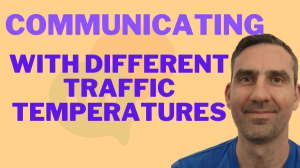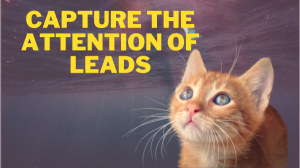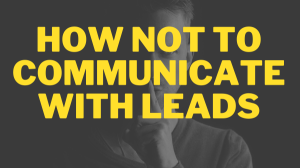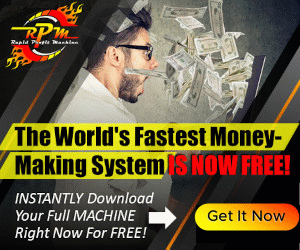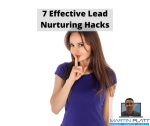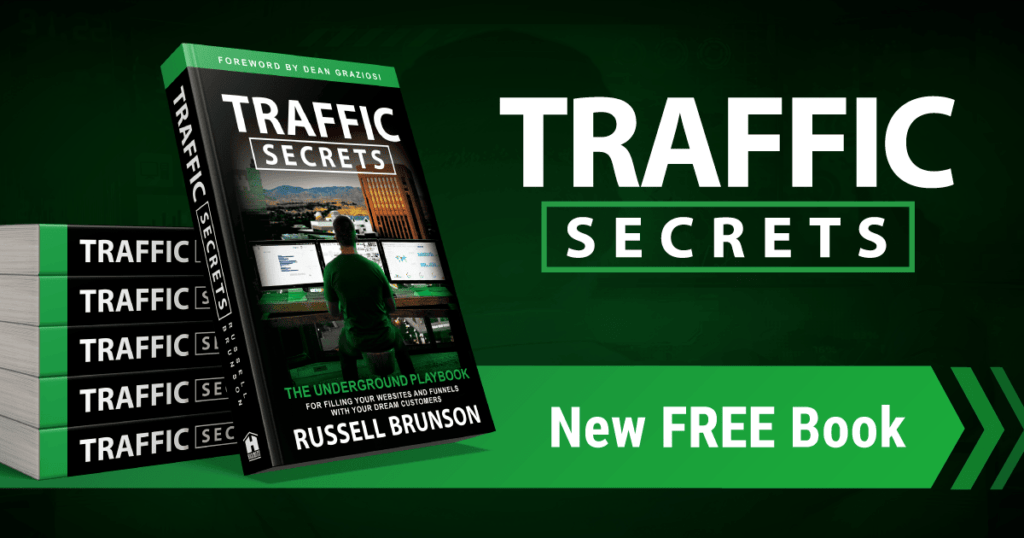I. Introduction
What are Conversion Rates?
Website not converting? This is often blame of bad traffic, a poor offer, and it might be. But first...
Take your traffic temperature
Conversion rates refer to the percentage of website visitors who take a desired action, such as making a purchase, filling out a form, subscribing to a newsletter, or signing up for a trial.
The conversion rate is calculated by dividing the number of conversions by the number of visitors to the site, and multiplying by 100 to get a percentage.
The factors that impact how well content converts for a particular visitor can vary depending on the type of content and the desired action. However, here are some common factors that can influence conversion rates:
Relevance: The content should be relevant to the visitor's interests and needs. If the content is not relevant, the visitor is less likely to take the desired action.
Clarity: The content should be clear and easy to understand. Visitors should not have to work too hard to figure out what the content is trying to communicate.
Trustworthiness: Visitors are more likely to take action if they trust the website and the brand behind it. This can be built through testimonials, reviews, social proof, and other trust signals.
User experience: The website should be easy to navigate and use. If visitors have a difficult time finding what they're looking for or completing the desired action, they may abandon the site.
Value proposition: The content should clearly communicate the value proposition of the product or service being offered. Visitors should understand why they need the product or service and how it will benefit them.
Call to action: The content should include a clear call to action that tells visitors what they need to do to take the desired action. The call to action should be prominent and easy to find.
How Traffic Temperature Affects Conversion Rates
Traffic temperature refers to the level of awareness or interest that a visitor has when they arrive at a website. Visitors can be broadly categorized into three different temperature levels: cold, warm, and hot.
Cold traffic refers to visitors who are not familiar with the brand or the product/service being offered. They may have just stumbled upon the website through a search engine or an advertisement.
Warm traffic refers to visitors who are somewhat familiar with the brand or product/service, but have not yet made a purchase or taken any action.
Hot traffic refers to visitors who are highly interested and motivated to take action, such as those who have already added items to a shopping cart or are returning customers.
The temperature of the traffic can have a significant impact on conversion rates because visitors in different temperature levels have different needs and expectations. Here are some ways traffic temperature can affect conversion rates:
Cold traffic: Visitors who are unfamiliar with the brand or product/service may require more information and education before they are willing to take action.
Websites that cater to cold traffic should focus on providing value, building trust, and addressing objections through informative content, social proof, and testimonials.
Warm traffic: Visitors who are somewhat familiar with the brand or product/service may require more persuasion and motivation before they are willing to take action.
Websites that cater to warm traffic should focus on highlighting the unique selling points and benefits of the product/service, as well as providing incentives such as discounts, free trials, or bonuses.
Hot traffic: Visitors who are highly interested and motivated to take action may require less persuasion and motivation.
Websites that cater to hot traffic should focus on making the buying process as smooth and easy as possible, such as by providing clear and prominent calls to action, simplifying the checkout process, and offering quick and easy support.
How the 5 stages of awareness affect conversion rates
The five stages of awareness, as defined by Eugene Schwartz in his book "Breakthrough Advertising," refer to the different levels of knowledge or awareness that a potential customer has about a product or service.
This is a slightly more specific and detailed version of traffic temperature, should you need to better understand the stage of your visitor, so that you can better target their stage and understand, and craft your marketing messages accordingly.
The five stages are:
Unaware: The potential customer is not aware of the product or service and its benefits.
Problem-aware: The potential customer is aware of a problem or need they have but is not aware of any specific solutions.
Solution-aware: The potential customer is aware of the product or service as a potential solution to their problem or need, but has not yet decided to purchase.
Product-aware: The potential customer is aware of the product or service and its features and benefits, but has not yet decided to purchase.
Most-aware: The potential customer is fully aware of the product or service, its benefits, and how it compares to other options on the market, and is ready to make a purchase.
Each stage of awareness can have a significant impact on conversion rates because the potential customer has different needs and expectations at each stage.
Here's how the five stages of awareness can affect conversion rates:
Unaware: Since the potential customer is not aware of the product or service, conversion rates will be low.
The focus should be on building awareness and educating potential customers about the product or service through advertising, content marketing, or other forms of outreach.
Problem-aware: The potential customer is aware of a problem or need but is not aware of any specific solutions. Conversion rates will be higher than in the unaware stage because the potential customer is actively looking for a solution.
The focus should be on educating potential customers about the benefits of the product or service as a solution to their problem or need.
Solution-aware: The potential customer is aware of the product or service as a potential solution but has not yet decided to purchase. Conversion rates will be higher than in the problem-aware stage because the potential customer is considering the product or service as a viable option.
The focus should be on building trust and credibility by providing social proof, testimonials, and case studies.
Product-aware: The potential customer is aware of the product or service and its features and benefits but has not yet decided to purchase. Conversion rates will be higher than in the solution-aware stage because the potential customer is actively evaluating the product or service.
The focus should be on addressing objections and highlighting the unique selling points of the product or service.
Most-aware: The potential customer is fully aware of the product or service, its benefits, and how it compares to other options on the market and is ready to make a purchase. Conversion rates will be the highest in this stage because the potential customer has made a decision to purchase.
The focus should be on making the buying process as smooth and easy as possible.
II. Communicating With Different Traffic Temperatures
Talking to visitors with different traffic temperatures can be challenging, but tailoring your message and approach to their specific needs and expectations can significantly improve your conversion rates. Here are some tips on how to talk to visitors with different traffic temperatures to get the highest conversion rates:
Cold traffic: Visitors who are not familiar with your brand or product/service require more education and information before they are willing to take action.
To talk to cold traffic visitors effectively, focus on providing valuable content that addresses their pain points and provides solutions. Use clear and concise language, avoid jargon, and make your message easy to understand.
Build trust by providing social proof, such as customer testimonials or case studies, and include calls to action that encourage them to take the next step.
Warm traffic: Visitors who are somewhat familiar with your brand or product/service require more persuasion and motivation before they are willing to take action.
To talk to warm traffic visitors effectively, focus on highlighting the unique selling points and benefits of your product/service. Use persuasive language that addresses their needs and desires, and offer incentives such as discounts, free trials, or bonuses to encourage them to take action. Use retargeting ads and email marketing to stay in touch and nurture the relationship.
Hot traffic: Visitors who are highly interested and motivated to take action require less persuasion and motivation.
To talk to hot traffic visitors effectively, make the buying process as smooth and easy as possible. Use clear and prominent calls to action that guide them towards the checkout page, and simplify the checkout process by removing any unnecessary steps or distractions.
Offer quick and easy support, such as live chat or phone support, to address any questions or concerns they may have.
Returning visitors (Hot Traffic): Visitors who have already purchased from you or taken some other action require a different approach than new visitors.
To talk to returning visitors effectively, personalize the experience by using their past behavior and preferences to tailor your message and offers.
Use upselling and cross-selling techniques to offer them additional products or services that complement their previous purchases, and reward their loyalty with exclusive discounts or perks.
IV. Capture The Attention of Different Traffic Temperatures
Headlines and subject lines are crucial to capturing the attention of your target audience and generating high conversion rates.
However, not all traffic temperatures respond to the same types of headlines and subject lines. Here are some tips for crafting effective headlines and subject lines for different traffic temperatures:
Cold Traffic: Cold traffic refers to people who are not familiar with your brand or product.
To capture their attention, use headlines or subject lines that focus on their pain points or desires. For example, "Solve Your X Problem Today!" or "Discover the Secret to Achieving Y."
Warm Traffic: Warm traffic includes people who are aware of your brand or product but haven't yet made a purchase.
To convert them, use headlines or subject lines that highlight the benefits of your product or service. For example, "Get the Best Results with Our Product!" or "Improve Your Life with Our Service."
Hot Traffic: Hot traffic consists of people who have already made a purchase or engaged with your brand.
To keep them interested, use headlines or subject lines that offer exclusive deals, upgrades, or new products. For example, "Upgrade Your Experience with Our Premium Offer!" or "New Product Alert: Be the First to Get it!"
In addition to the above tips, consider the following best practices for crafting effective headlines and subject lines:
- Keep it short and concise.
- Use action-oriented verbs.
- Create a sense of urgency or scarcity.
- Personalize the message to the recipient.
Test different headlines and subject lines to see what works best for your audience.
By tailoring your headlines and subject lines to different traffic temperatures, you can capture their attention and improve your conversion rates.
V. The wrong messages for different traffic temperatures?
Using the wrong message for different types of traffic temperature can have a negative impact on your marketing efforts and lead to low conversion rates. Here are some potential consequences:
Cold Traffic: If you use a message that is too promotional or sales-focused for cold traffic, it may be perceived as spammy or pushy. This can result in a high bounce rate, low engagement, and damage to your brand reputation. For example if you’re talking to a person in a way you would to warm traffic, these people might be convinced by your marketing, but not understand their problem, and not get it. They are essentially not qualified yet.
Warm Traffic: If you use a message that is not tailored to the needs and interests of your warm traffic, they may not be compelled to take the next step in the buyer's journey. This can result in missed opportunities for conversions and lost revenue.
If you were to talk to warm traffic like it is cold, they know they have a problem to solve, and know about solutions, so might perceive your message as talking down to them, or too basic.
Hot Traffic: If you use a message that is not personalized or relevant to your hot traffic, they may feel like they are being treated like just another customer. This can result in reduced loyalty, fewer repeat purchases, and a decrease in customer lifetime value.
In addition to the above consequences, using the wrong message for different types of traffic temperature can also lead to a waste of time and resources. By failing to target your message effectively, you may end up spending money on marketing campaigns that are not generating a positive return on investment.
Therefore, it is crucial to understand your audience and tailor your messages to their needs and interests. By doing so, you can increase engagement, improve conversion rates, and build a stronger relationship with your customers.
V. Conclusion
It is incredibly important to understand the temperature of the traffic that you are talking to, then craft the message to target their temperature. This could mean that you say something like “Sick of wasting money trying to get rich”?
This implies that someone has tried a solution, so they must be warm or hot. Cold, unaware traffic will probably not identify with this statement, and so the interest will only be from those warm and upwards.
Whilst this limits the size of the market, you will get better results working this way.
You can also advertising to cold markets by teaching, them, get them into your funnel (which takes them through the different stages) and you can do it more slowly through email follow-up.
Give them an opportunity to understand each stage in the 5 stages, and you’ll benefit from much higher conversion rates.
If you’d like your own funnel to start to create a list in this way, click here.
